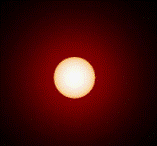Department of Physics and Astronomy: Publications and Other Research

Norman R. Simon Papers
Document Type
Article
Date of this Version
1991
Citation
The formation and evolution of star clusters (A93-48676 20-90), p. 296-298. (1991).
Abstract
In a recent study, Simon (1990) determined masses and temperatures for a large sample of RRc stars in w Centauri. The method proceeded by comparing with the results of hydrodynamic modeling the three observed quantities: period, relative luminosity and Fourier phase, ϕ31. An absolute mass, temperature and luminosity could then be specified for each star once a scale factor, i.e., a distance to w Cen, was chosen. Although this distance is arbitrary the particular choice made by Simon (1990) yielded a mass range in agreement with the mass range of the RRd stars (Cox, Hodson and Clancy 1983) and with the BaadeWesselink (BW) masses of three RRc field stars (Simon 1990, and references therein). The same choice also gave temperatures which correctly placed the RRc stars in the first overtone instability strip.
However, the w Cen study also found a disconcerting lack of any correlation between mass and metallicity - that is to say, at given [Fe/H] a large range of masses was found, Δlog M - 0.1. This mass spread cannot be explained by the canonical evolutionary tracks of Lee, Demarque and Zinn 1990 (hereinafter LDZ) unless the lower mass stars are brighter, a condition which was not seen in the Simon (1990) results. A similar contradiction to evolution theory has been found in the absence of a mass vs. [Fe/H] correlation in BW studies of RR Lyrae field stars (Liu and Janes 1990a).


Comments
Copyright 1991 Astronomical Society of the Pacific. Provided by the NASA Astrophysics Data System.